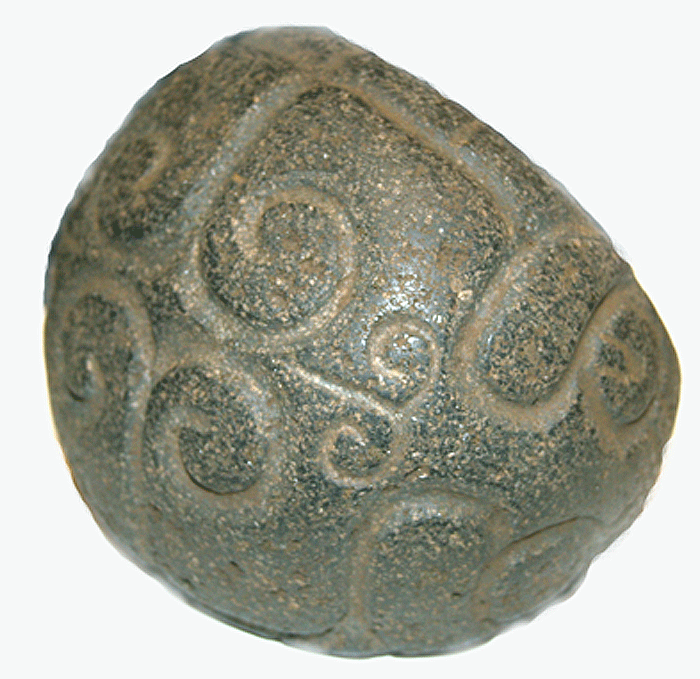Mayan Basalt Manopla, 300 CE - 900 CE
Basalt
5.25 x 4
MT.0292
Further images
The ball game, perhaps ritually signifying the transit of the sun and moon between the celestial and terrestrial spheres, was an important event in Mesoamerican culture, considered necessary to maintain...
The ball game, perhaps ritually signifying the transit of the sun and moon between the celestial and terrestrial spheres, was an important event in Mesoamerican culture, considered necessary to maintain the cosmic cycle. The game was played on a large, I-shaped court enclosed by high walls that had an astrological significance in relation to its alignment. At the midpoint, two stone rings were placed high in the air, about twenty-seven feet high. Apparently, scholars believe that the object of the game was to get the hard rubber ball through one of the hoops without using your feet or hands, only your hips. This is where the yoke comes in. Yokes made from cloth were worn around the players’ hips as protective padding. However, this yoke is made from heavy stone, suggesting that it was created for ceremonial use instead. Because the ballgame was of utmost social and religious significance to the Maya, it is believed that ceremonial ballgames were played. In the Popol Vuh, the most important source of Mayan mythology, a ball game is described taking place between the Hero Twins and the Lords of the Underworld. Upon the victory, the Hero twins, Hunahpu and Xbalanque, were deified as the sun and the moon. Perhaps ritual reenactments of this mythological match were performed in which “players” acting as the hero twins wore such elaborate and impractical equipment.
Manoplas were carved handstones used to hit the hard rubber ball. Because the use of hands was prohibited during the game, scholars debate whether manoplas were used exclusively to set the ball in motion during the beginning of the ballgame, or whether the athletes were actually allowed to used such objects during the game itself. The face of this handstone has been engraved with spiral motifs, suggesting that ballgame equipment was meant to be beautiful as well as functional.
Manoplas were carved handstones used to hit the hard rubber ball. Because the use of hands was prohibited during the game, scholars debate whether manoplas were used exclusively to set the ball in motion during the beginning of the ballgame, or whether the athletes were actually allowed to used such objects during the game itself. The face of this handstone has been engraved with spiral motifs, suggesting that ballgame equipment was meant to be beautiful as well as functional.







